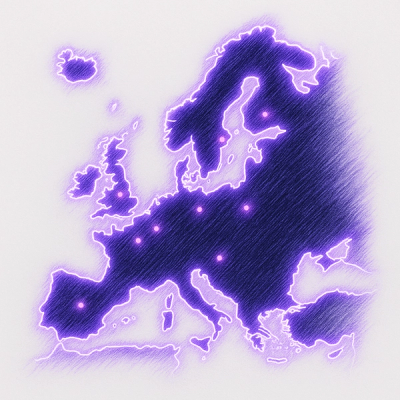BobManifestGenerator
BobManifestGenerator is a Webpack plugin that helps you generate a manifest.json file for your microservice, which can then be loaded via Bob.
Table of Contents
Prerequisites
In order to use BobManifestGenerator you need the following Prerequisites:
webpack version 5 or highernode.js version 10.13.0 or highernpm version 6.4.1 or higher
Plugins
In order to start using the plugins you should first install the package from npm:
npm i -D @studyportals/bob-manifest-generator
After installing it you can import it to your webpack configuration file like so:
const BobManifestGenerator = require('@studyportals/bob-manifest-generator');
BobManifestGenerator provides 3 different plugins for you to use. Here you can see how to use all 3 of them.
ManifestGenerator
ManifestGenerator takes care of building a manifest file for your microservice that is readable by Bob. You can use it like so:
plugins: [
new BobManifestGenerator.ManifestGenerator({
name: string,
html: string,
embedChunk: string,
baseURL: string,
crossorigin: boolean,
exclude: string[],
async: string[],
defer: string[],
priority: boolean
})
]
Output
ManifestGenerator outputs a manifest file with the following structure:
{
"name": "Dummy Microservice",
"html": "https://bucket.prtl.co/index.html",
"crossorigin": true,
"assets": {
"js": [
{
"url": "https://bucket.prtl.co/dist/bundle.[hash].js",
"async": true
}
],
"css": [
{
"url": "https://bucket.prtl.co/dist/styles.[hash].css",
"defer": false
}
]
},
"dllDependencies": [
{
"name": "[PACKAGE-NAME]-dll",
"version": "1.0.0",
"assets": {
"js": [
{
"url": "script.js"
}
],
"css": [
{
"url": "style.css"
}
]
}
}
]
}
Options
When using the plugin, you can pass an options object to the constructor. This can include the following options:
name | The name of your microservice. | yes |
html | The HTML that should be injected on the page the microservice is loaded in. | no |
embedChunk | The name of the chunk that should be injected into the manifest html. This should only be used as a last resort where javascript need's be injected inline. Please discuss this within the Frontend tribe before implementation. | no |
baseURL | The base URL for your microservice's assets. This will be prepended to the filenames. | no (default: '') |
crossorigin | Determines if JS assets will be inserted on the page with a crossorigin="anonymous" tag. | no (default: true) |
exclude | An array of filenames to be excluded from the manifest. This can be just a filename or a filename including extension. When true is passed as a value, all assets will be excluded. | no (default: []) |
async | An array of JS filenames to be loaded async. This can be just a filename or a filename including extension. Keep in mind that only javascript assets may be loaded async. When true is passed as a value, all javascript assets will be loaded async. | no (default: []) |
defer | An array of CSS filenames to be lazy-loaded. This can be just a filename or a filename including extension. Keep in mind that only CSS assets may be lazy-loaded. When true is passed as a value, or when the value is omitted, all CSS assets will be lazy-loaded. | no (default: []) |
priority | Whenever a microservice should be loaded with priority or not. This is usually the case when other microservices depend on your priority microservice. Such as StudentJS and AnonymousStudent | no (default: false) |
IMPORTANT: Assets that are generated from dynamic imports will be automatically excluded from the manifest and therefore don't need to be excluded using the exclude option.
DllReferencePlugin
DllReferencePlugin can be used to create references to dependencies you want to use via DLL (Dynamic Library Linking). Bob will then take care of de-duplicating these dependencies when they are used by multiple microservices.
plugins: [
new BobManifestGenerator.DllReferencePlugin({
name: string,
manifest: object
})
]
Output
DllReferencePlugin will add references to DLL dependencies to your manifest file like so:
{
"dllDependencies": [
{
"name": "[PACKAGE-NAME]-dll",
"version": "1.0.0",
"assets": {
"js": [
{
"url": "script.js"
}
],
"css": [
{
"url": "style.css"
}
]
}
}
]
}
Options
When using the plugin, you can pass an options object to the constructor. This can include the following options:
name | The name of the package without the @studyportals/ portion. | yes |
manifest | The manifest JSON that was generated by the DLL package you want to add as a dependency. | yes |
DllManifestGenerator
DllManifestGenerator can be used inside DLL bundle packages to create a manifest for it.
plugins: [
new BobManifestGenerator.DllManifestGenerator()
]
When implementing DllManifestGenerator, keep the following in mind:
- All assets should be used from a
dist folder in the root of your DLL package.
- If you want to add a stylesheet to your DLL bundle's assets you'll have to add the filename for it in the
style property of your DLL package package.json file.
{
"style": "style.css"
}
Output
DllManifestGenerator will gather all necessary information about the DLL bundle in a manifest file:
{
"name": "[PACKAGE-NAME]-dll",
"version": "1.0.0",
"assets": {
"js": [
{
"url": "script.js"
}
],
"css": [
{
"url": "style.css"
}
]
}
}



